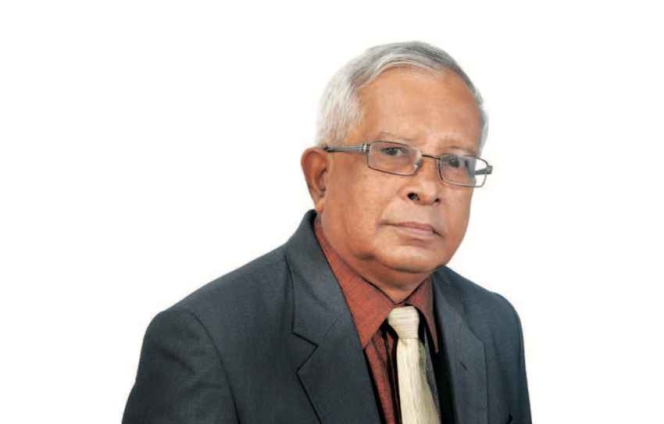
The Plastics and Rubber Institute of Sri Lanka, and the Sri Lanka Association of Manufacturers and Exporters of Rubber Products, together with the assistance of the Export Development Board, conducted a two- day virtual workshop on Advanced Technology/Smart Manufacturing For The Rubber Product Industry In Sri Lanka, in December 2020. Despite the fact that the country was just raising its head from the deleterious aftermath of the first and second waves of Covid -19, the participation was beyond all expectations, thus indicating the weightage placed in keeping abreast of modern trends and moving with times by the industry community and the professionals and I presume that this is the current trend throughout the world.
As a member of the organising committee of the event and more as a hands-on person of the technologists of the not so modern generation, I realised that I was a curious and a rather passive observer of the currently fast unfolding industry scenario. The array of topics presented by local as well as overseas experts on their respective specialties was impressive. They covered Smart Energy Monitoring, IOT Built Industry Automation, Big Data Processing and applications, Conditioned based Monitoring for Maintenance, 3D/4D Printing, Virtual Product Design and Testing, Finite Element Analysis, and Product Failure Analysis.
It made me guessing with fascination, how much the information utilisation scenario in the manufacturing industry has metamorphosed during the past few decades since the times of two great discoveries/inventions, of Charles Babbage and Arthur. C. Clarke, that paved way for the evolution of the Information and Communications revolution. Charles Babbage (1791-1871) was an extraordinarily talented scientist, mathematician, economist and engineer. He is best known today - as he was in his lifetime - for inventing two types of cogwheel calculating machines, the forerunners of the modern computers. It was Arthur C. Clarke. after the crest of World War II, from his base in Stratford-On-Avon, England, as a young officer in the Royal Air Force, who dabbled in science fiction writing, floated the idea of global communications satellites in a 1945 letter to the publication Wireless World. It will be of interest to learn that the latter made Sri Lanka his second home and contributed in no small way to the development of ICT and astronomy in our country during the sixties and seventies.
As I gathered, with my rather limited knowledge of ICT, that the common features, of the modern-day innovations are generating a vast amount of real time data on all key aspects of the value chain, and interfacing between the value adding activities. Automation and reducing the dependability on the human factor has been another significant trend. Another key driver has been the necessity for reliability, agility and robustness in delivering products and services to the customer in the ever-changing customer preferences, which are again fueled willfully through product promotion and creation of new needs through massive adverting campaigns and mass communications. Companies are increasingly embracing the innovative technologies, to enable business growth, wealth accumulation, contribution to the national economies, which has helped in achieving improved quality of life, particularly in the traditionally termed developed countries.
Right through his anthropogenic evolution, Homo Sapiens or the “thinking man” has been characterised by the use of his brain to find easier and faster ways of doing things, which was an absolutely vital advantage for his survival in the primitive hostile environment. Commencing with use of stone tools, discovery of fire, and iron, this trend has continued throughout the history of mankind. During the more recent period of the last three centuries, which culminated in the Industry 4.0, some key landmarks, which reflect the quest of the mankind to better lives, through increased and efficient resource utilisation can be identified.

Revolutions
This process began in Britain in the 18th century and from there spread to other parts of the world. Although used earlier by French writers, the term Industrial Revolution was first popularised by the English economic historian Arnold Toynbee (1852–83) to describe Britain's economic development from 1760 to 1840. The first industrial revolution came with the advent of mechanisation, steam power and water power. This was followed by second industrial revolution which revolved around mass production and assembly lines using electricity. Henry Ford’s conveyor belt system was put into motion in December 1st of 1913 in his Detroit manufacturing plant. Fully mechanised, or partially mechanised, assembly lines allowed Ford to offer a vehicle for a working family. One of his goals was to have a car that every family could own.
The car that every family would soon come to own was the Model T. His manufacturing plants would go on to produce over 15 million Model Ts and this is due almost entirely to his assembly line. In order to achieve a production of the Model T at such a high rate, he needed to break down the process of assembling the car to make it as efficient as possible to produce, while still being financially accessible.
The third industrial revolution came with electronics, IT systems and automation, which led to the fourth industrial revolution that is associated with cyber- physical systems. Some of the principles of which were the topics of the December Workshop. Generally speaking, Industry 4.0 describes the growing trend towards automation and data exchange in technology and processes within the manufacturing industry, including:
- The internet of things (IoT)
- The industrial internet of things (IIoT)
- Cyber-physical systems (CPS)
- Smart manufacture
- Smart factories
- Cloud computing
- Cognitive computing
- Artificial intelligence
This automation creates a manufacturing system whereby machines in factories are augmented with wireless connectivity and sensors to monitor and visualise an entire production process and make autonomous decisions. Wireless connectivity and the augmentation of machines will be greatly advanced with the full roll out of 5G
The fourth industrial revolution also relates to digital technologies that can create virtual versions of real-world installations, processes and applications. These can then be robustly tested to make cost-effective decentralised decisions. In short, this should allow for digital transformation and for automated and autonomous manufacturing with joined-up systems that can cooperate with each other.
Black spots
It can thus be unanimously agreed that the emerging technologies have already resulted in tremendous benefits for mankind and that they have vast future potential in changing the entire human civilisation. While appreciating and accepting the usefulness of the technologies, I cannot refrain from contemplating on the black spots in the white cloth. The disadvantages of the digital technologies have been well documented throughout the world and some of these, include, data security, digital media manipulation, job insecurity, over reliance on gadgets, addiction, depersonalization, and social alienation, and stress related physical and mental illnesses and the list is not exhaustive. Diminishing of the human touch is considered by many, as a matter of grave concern, and its effect on the personal, ethical, family and social has already begun to reveal its dark side.
As an adaptive measure of the new normal mentality that followed the Covid-19 pandemic, “Social Distancing” intruded our day to day activates over the past one and half years. However, on thinking reflectively, it will be evident that Social Distancing actually had its beginnings in the first three industrial revolutions, while it got aggravated in the recent years. Dilemmas and debatable questions as to whether dehumanisation is still progressing and what will be the outcome, if the current rate of rapid technology trend continues? These will become key challenges for the sociologists and sociopsychologists and the modern HR specialists. Prioritising automation and sub optimisation of the human resource, in the disguise of improving operational efficiency, as a business strategy of maintaining sustainability, could turn out to be short lived.
Over dependence on technology at the expense of losing the much-required human touch and interpersonal relationships, can be witnessed in many of the day-to-day activities, such as internet or online banking, bill payments, buying at super markets, home deliveries, and on-line webinars. I have personal experience of the short comings of on-line lecturing for students and on virtual workshops, which can only be utilised as a stop gap measure. As a person of the “old generation,” I find it an exhilarating experience to walk to the local bank, greet good morning to the staff, and having a friendly chat with the familiar cashier, while getting my transaction done. Some may equate such practices to lack of time management and productivity. Human interaction of this kind holds a special position in countries such as India and Sri Lanka, which has rich religious and cultural heritages, and adopting the new technologies as a panacea for improving all the aspects of efficiency and productivity in an effort be stay competitive can only be a short-term strategy.
It was Robert Frost, the American poet (1874-1963), who once philosophically remarked, “don’t ever take fence down, until you know why it was put up”
Obsolescence due to ineffective use or total non -use which we witness with machinery and equipment, may be applicable to the humans as well. It is said that the human body has about one hundred, vestigial organs, including the appendix, which have become nonfunctional, during the evolutionary process as a result on non-use and obsolescence. (TT)
- Yokohama Rubber
- GEOLANDAR X-AT
- All-Terrain Tyres
- Racing Tyres
- FIA Extreme H World Cup
- Hydrogen-Powered Motorsport
Yokohama Rubber To Power FIA Extreme H World Cup With GEOLANDAR Tyres
- By TT News
- September 12, 2025

The Yokohama Rubber Co., Ltd. has been selected as the official tyre supplier for the groundbreaking FIA Extreme H World Cup, the world's first hydrogen-powered motorsport series. The company will supply its GEOLANDAR brand of tyres for the championship, which is scheduled to commence next month in Saudi Arabia. The company will also continue to supply GEOLANDAR tyres for the Extreme E off-road electric vehicle series, which holds its final event on 4–5 October in Saudi Arabia.
Central to both the Extreme H and Extreme E series is a shared mission to advance sustainability and equality. The championships serve as dynamic platforms to promote environmental awareness and demonstrate cutting-edge technologies while also enforcing a strict mandate for gender parity by requiring each team to field one male and one female driver. The Extreme H series will feature eight international teams operating the Pioneer 25, a cutting-edge hydrogen fuel cell vehicle capable of generating 550 horsepower and accelerating from 0 to 100 kmph in 4.5 seconds. The global significance of this new championship is expected to draw a worldwide television audience across multiple continents.
As the predecessor to Extreme H, the Extreme E series utilised the high-performance all-electric Odyssey 21 vehicle. All teams competing in the new hydrogen series will also participate in this final Extreme E event, marking the conclusion of the electric championship as it transitions towards a hydrogen future.
In alignment with the environmental principles of these series, Yokohama Rubber will provide a specially developed prototype tyre based on its GEOLANDAR X-AT model. This tyre has been engineered with a significantly increased ratio of sustainable materials, comprising 38 percent renewable and recycled content. It has also been fortified with enhanced durability characteristics to withstand the unique demands of heavy hydrogen-powered and electric off-road racing vehicles.
Hankook Tire Unveils Future Mobility Innovations At 'Design Innovation Day 2025'
- By TT News
- September 12, 2025
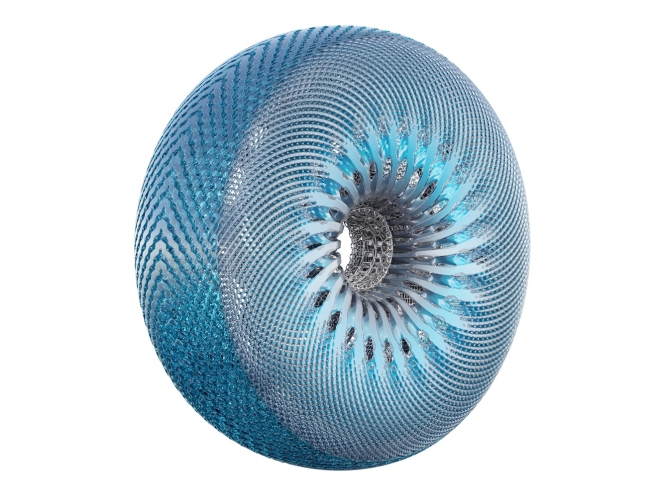
Hankook Tire is advancing its future mobility leadership through strategic open innovation and collaborative design projects. This effort was showcased at the company’s recent Design Innovation Day 2025, held at its Pangyo Technoplex headquarters. The event serves as a platform to present new solutions integrating sustainability, innovation and design while reinforcing partnerships with global technology leaders.
A major focus was the unveiling of two key outcomes from Hankook’s ongoing Design Innovation Project. The first was ‘Sustainable Concept Tyre’, an embodiment of the company’s ESG vision. Developed using advanced 3D printing technology, it is constructed from renewable and recycled materials. Its distinctive organic design was realised in collaboration with Harvestance using specialised engineering software.
The second reveal was the WheelBot 2, a multi-directional mobility platform developed with robotics startup CALMANTECH. This advanced robotic wheel system, equipped with tri-axial spherical tyres, demonstrates new possibilities for movement. Its potential was illustrated through a live demonstration of the PathCruizer, a two-seater pod concept powered by the WheelBot technology.
Beyond product reveals, the event highlighted Hankook’s commitment to knowledge sharing, featuring a presentation on 3D printing advancements from LG Electronics. These collaborations are central to Hankook’s strategy of strengthening its technology leadership. Since 2012, the company has partnered with world-renowned design universities and technology firms, consistently earning prestigious international design awards and solidifying the premium stature of its global brand.
CEAT Cuts Tyre Prices Across Portfolio Following GST Rate Reduction
- By TT News
- September 12, 2025
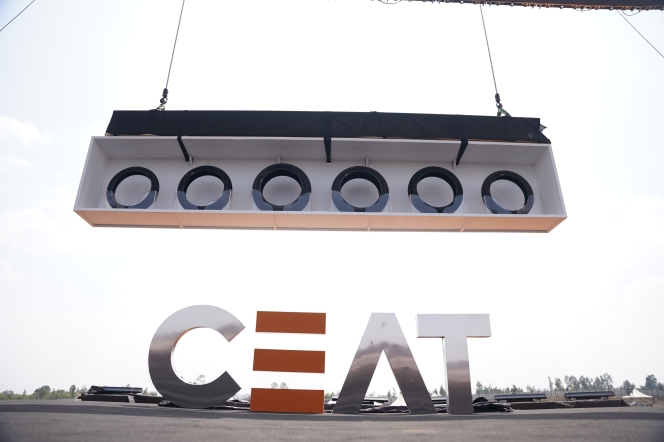
Indian tyre maker to pass full benefit of tax cuts to customers from 22 September
CEAT Limited said on Thursday it would reduce prices across its entire tyre range following the Indian government’s decision to cut goods and services tax (GST) rates on tyres, with the full benefit being passed on to customers.
The Mumbai-based tyre manufacturer said new prices would take effect from 22 September, covering commercial, agricultural, passenger vehicle and two-wheeler segments.
India’s 56th GST Council meeting approved significant reductions in tax rates for the tyre industry. GST on new pneumatic tyres was cut to 18% from 28%, whilst tractor tyres and tubes will attract a reduced rate of 5%.
“We thank the Government of India and the GST Council for their timely and progressive decision to rationalise tax rates in the tyre sector,” said Arnab Banerjee, Managing Director & CEO of CEAT Limited.
“The reduced GST slabs will greatly benefit the tyre industry and consumers alike. Not only will it lower the cost of owning and operating a vehicle for customers across various segments, but by making tyres more affordable to replace, it will also make our roads safer.”
Banerjee added the move would “spur formalisation and greater compliance, while also fostering sustainable growth in the sector.”
The GST rate cuts represent a significant policy shift for India’s automotive sector, where high taxation has been a longstanding concern for manufacturers and consumers.
Yokohama Rubber Recognised As ‘DX Certified Business Operator’ By Japan’s METI
- By TT News
- September 12, 2025

The Yokohama Rubber Co., Ltd. has been officially recognised as a DX Certified Business Operator by Japan's Ministry of Economy, Trade and Industry (METI). The designation, which was granted on 1 September 2025, identifies companies that are thoroughly prepared for digital transformation as outlined by the Digital Governance Code.
This certification acknowledges Yokohama Rubber's comprehensive strategy for digital transformation, which is built on three core objectives: advancing business strategy, contributing to sustainability and reinforcing its IT infrastructure. Central to this effort is the company's proprietary AI framework, HAICoLab (Humans and AI ColLaborate), which drives group-wide digital initiatives. These include improving productivity, innovating processes, developing digital talent and building a global cloud-based IT system. The certification confirms that the company's efforts not only meet METI's stringent criteria but also demonstrate appropriate disclosure of information to its stakeholders.
Moving forward, the company said it will continue to leverage data from its entire value chain to adapt to a dynamic business environment. The company aims to enhance customer value, pursue sustainable innovation and transform its corporate culture to strengthen its competitive position and ensure long-term growth.



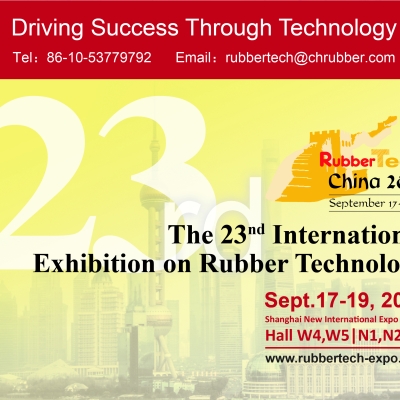
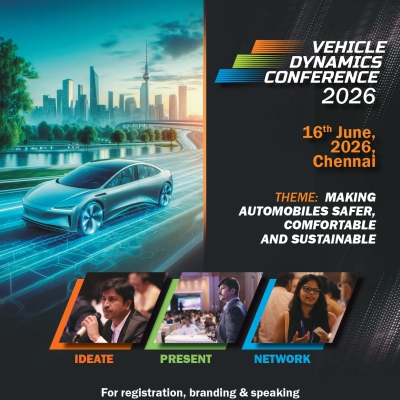

Comments (0)
ADD COMMENT